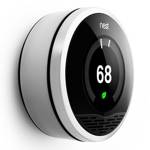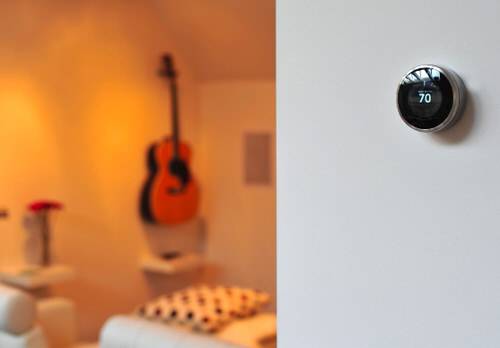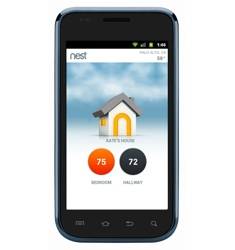Earlier this week I listed 5 signs of a great user experience in a tech product. One sign is that it changes you. I referred to revolutionary products like the iPhone and Twitter, that modified our online behaviors or habits. This trend is becoming more noticeable with the so called Internet of Things, where everyday objects are connected to the Internet. If a device or object has traditionally been a static thing, then it’s guaranteed to morph into something different once it becomes interactive.

Over the coming decade, we’re going to see a lot of new Internet-connected household devices that will literally change the way you live. A great example is a new device from a very well-funded startup called Nest Labs. At the end of 2011, the company released a Web-enabled thermostat called the Nest. Yes, a thermostat. It was designed by the man who invented the iPod for Apple, Tony Fadell.
The Nest thermostat is a round, shiny, stainless steel-encased object that is attached to a wall in your home. It features a scroll-wheel navigation, inspired by the original iPod. There is a digital screen in the middle, which changes color according to the temperature (orange for heat and blue for cool). You can have more than one Nest in your home and they’ll act as a network.

The idea behind Nest was directly inspired by the revolution in smartphones, which transformed the mobile phone into a full-fledged mobile computer. Nest labs co-founder Matt Rogers explained in a blog post how he and Fadell aim to do the same for the thermostat:
“The gap between the consumer experience in mobile products and the ones in our homes is enormous. I’ve been a programmer my entire life and could not program a thermostat for the life of me. I looked at it and thought, this beige plastic box cannot be the best our generation can come up with. Surely, there must be a better way.”
So other than the elegant design of Nest (another of the 5 signs of a great user experience), what makes the product different from the traditional thermostat? The main difference is that Nest is powered by 6 sensors and proprietary algorithms, which enables it to “learn” your living habits and adjust the temperature automatically throughout the day and night. The company claims that Nest will have created a personalized temperature schedule for you after just one week of use. Nest has WiFi, which enables it to monitor weather patterns. You can also control it via an iPhone app or on the Web.

Nest is a lot more expensive than the traditional thermostat you’d buy from your local hardware store. It costs $249, plus an installation fee of $119 if you want to get it professionally installed (which All Things D’s Katherine Boehret learned is a good move). The idea is that Nest will save you money on your energy bills. Note that Nest is currently sold out, but you can add your name to an email list to be notified of availability.
The thermostat is the first home device out of Nest Labs, but it intends to expand to other devices. In a CES video interview with Techcrunch, Nest Labs co-founder Matt Rogers noted that “there are lot of things in the home that have not been changed in 20-30 years.” The smoke alarm is one example of a device ripe for Internet connection, given that it operates via sensors.
It remains to be seen whether Nest can capture a large chunk of the thermostat market, especially given its high price relative to traditional thermostats. But there’s no doubt that this is where household devices like the thermostat are heading.
Using data and the Web to learn your living patterns and change your life for the better. Get used to that, because it’s what the next generation of home appliances will do.
Photo credit: Seth Frankel, via Nest.com









